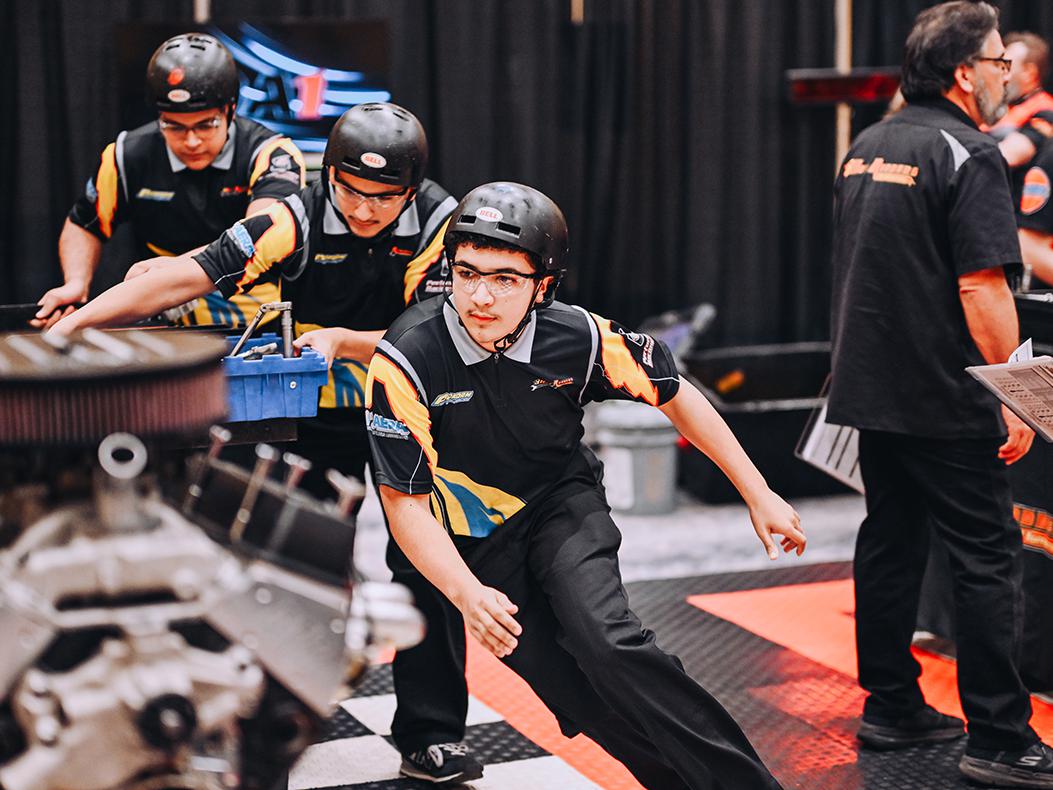Making Waves
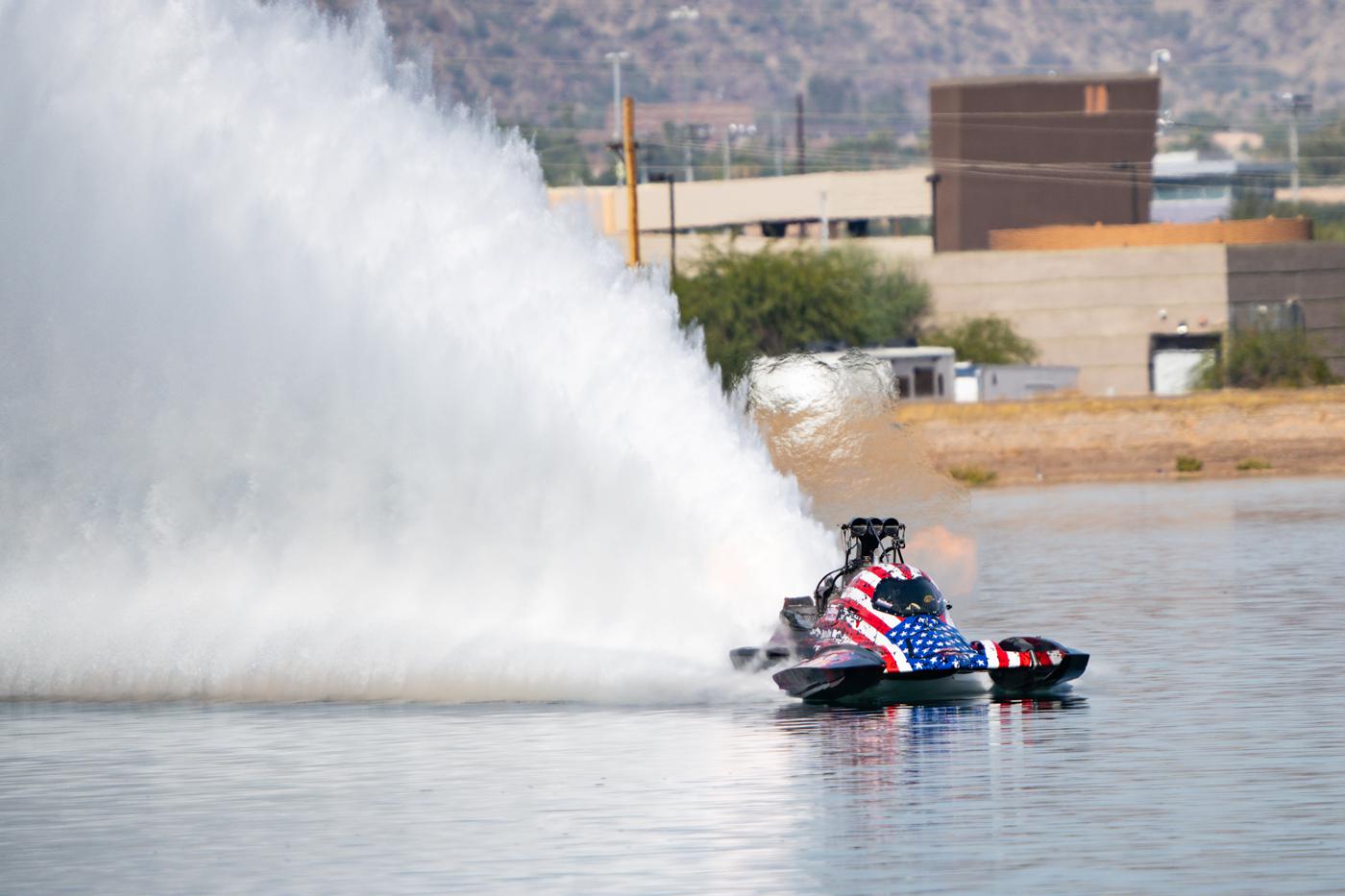
While the similarities between these powerplants competing on the water and combinations found in the automotive drag racing world might surprise you, some fundamental differences still distinguish them from their land-based counterparts.
Competing in the upper echelons of drag racing is an already incredibly sophisticated and demanding business, but it gets even more challenging when you swap out prepped pavement for H2O. Although drag boat engine combinations share plenty with their land-based counterparts, there are also many elements that are uniquely tailored to the demands of the discipline. Those deviations provide some insight into what it takes to perform at the top of the class.
Kjell Adams
NJBA Pro Gas Jet
In April 2022, Kjell Adams set a new NJBA Pro Gas Jet class record of 7.248 in the quarter-mile at Lake Ming in Bakersfield, California, in Fluid Motion, a 19-foot tunnel boat that weighs about 1,400 pounds. The jet boat gets its motivation from a 513-cubic-inch V8 with an architecture that’s loosely based on a Chevy big block. Running on Q16 race fuel, the mill makes 1,380 horsepower and 850 pound-feet of torque without the aid of power adders, as the Pro Gas Jet class requires competitors to use naturally aspirated engine combinations.
“The incorporation of technologies like data loggers has been huge for the jet boats and the top-end stuff like Top Alcohol Hydro,” Adams said. “It has allowed teams to make significant strides in this type of racing—we now have all of the information. I think we have 26 channels of data on this boat. It really allows you to pinpoint things and figure out how to make it perform even better. Things like individual cylinder timing have really changed the game in terms of consistency, and the longevity of parts.”
Adams told us that Pro Gas Jet shares many common traits with the technology found in NHRA Pro Stock. Along with the mandate for naturally aspirated engines, the class also limits displacement to 515 cubes, so toppling a record that had been in place since 2016 required some potent, high-winding hardware.
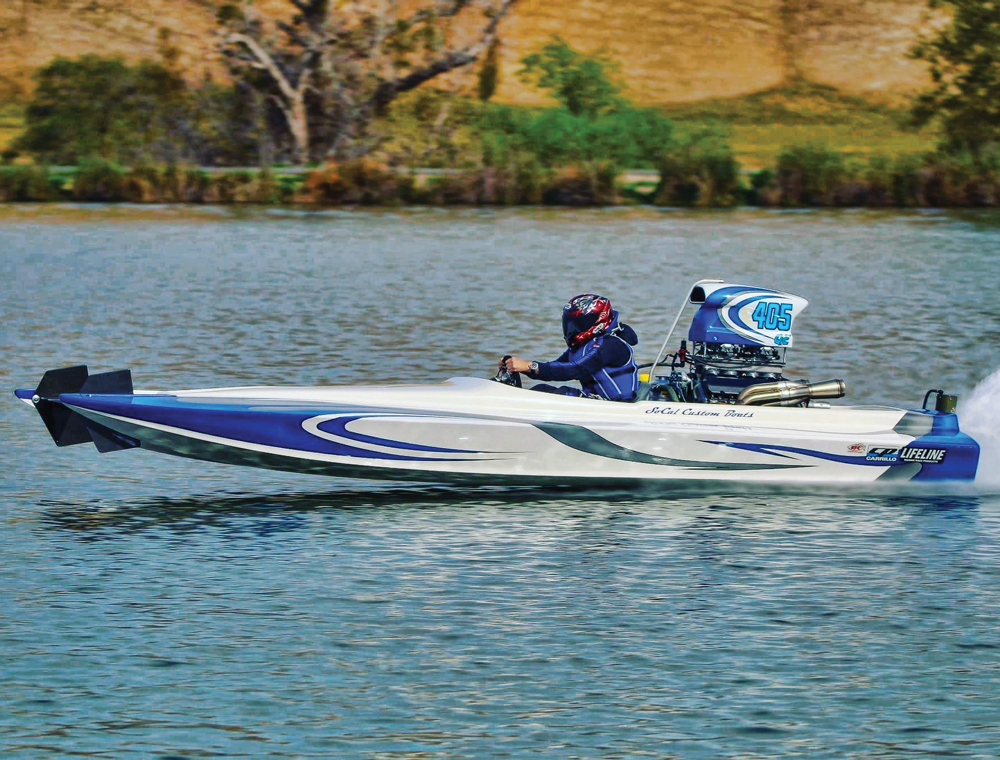
The DRCE (drag racing competition engine) billet engine block from GM, symmetrical billet heads, and intake came as a package from CFE Racing. The combination is outfitted with a gun-drilled and polished Bryant Racing billet crankshaft, CP-Carrillo rods and pistons, and a 70-mm custom tool steel camshaft with more than an inch of lift. A Jesel valvetrain keeps things under control at 9,200 rpm and beyond, while a dry sump system from Dailey Engineering ensures that everything stays well lubricated. A pair of 1,425-cfm carburetors from Holley Performance Products rounds out the combination.
“The boat uses a gear reduction transmission—it allows the motor to spin up at 9,200 rpm while the jet drive is spinning at around 7,500,” Adams explained. “That gets the motor where it wants to be to make peak power, and we can use a larger impeller on the jet drive to make it more efficient. When you start cutting down impellers to get the motor up, it makes the impeller more inefficient because you’re creating more cavitation.”
As with automotive drag racing, getting a good launch is crucial in drag boat competition. “I bring the rpm up to about 4,400, and the jet drive enables the boat to send the water through the pump,” he said. “But instead of going out the back, it goes out the sides with a special bucket, which allows the boat to sit still but keep the rpm high enough to prevent it from bogging when you take off. It’s kind of like a trans brake. We can flip a switch, and the data logging starts, the ignition system releases the rev limiter, and that bucket on the back of the boat opens up.”
Joey Grose
NJBA Pro Gas Flat
“This class is based off of NHRA Pro Stock,” said Joey Grose, who currently holds the NJBA Pro Gas Flat class record ET of 6.85 seconds at 155 mph. “Because we also currently run a Pro Stock car, it allows us to keep up on the technology and apply that to the boat program.”
Like Pro Gas Jet, Pro Gas Flat is a carbureted and naturally aspirated class that limits displacement to 515 cubic inches, but the boats themselves differ significantly, so the combinations necessitate their own specialized approach. “There’s no weight limitation in this class, but lighter isn’t always better,” he said. “There’s a lot of different styles of flat-bottom boats for this type of racing. We use our own custom mold for the boats that we run, and we’ve made a lot of changes to the bottom of it over the years. Motor placement and V-drive placement play a big role in this particular class.”
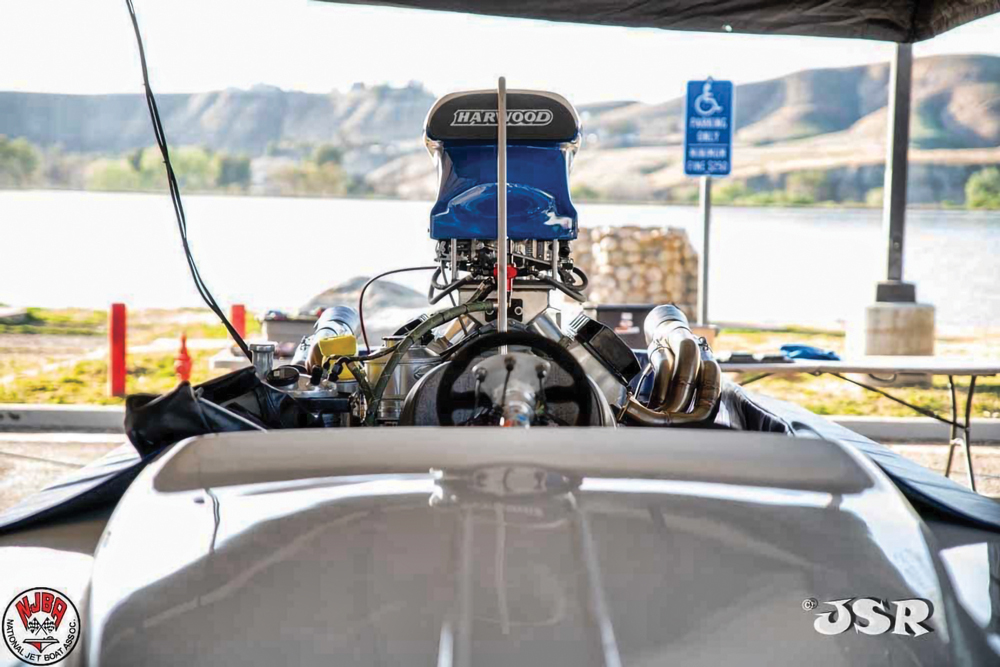
Grose’s C25-fed, big block Chevy-based DRCE V8 is equipped with a Winberg crankshaft, MGP connecting rods, CP-Carrillo pistons, a Bullet camshaft, Jesel lifters, and Manton pushrods, among other go-fast hardware. “The cylinder heads are a GM casting that we created our own CNC program for,” he said. “And we build parts like the manifolds and rocker arms in-house as well.”
The engine is topped with a pair of 1,250-cfm carburetors that have also seen significant tweaking by his Lodi, California-based shop, Grose Racing Engines. “The carburetors are a big factor in getting these boats to run at this level, so we’ve spent a lot of time fine-tuning those,” said Grose. “They’re based on a Holley design, but it’s all our own work as far as the internals go.”
Grose said teams that use automotive engine combinations in drag boat racing will quickly discover the importance of fine-tuning the powerplant to the application. “In a car, you either have a converter or a clutch that allows you to bring the rpm up for the launch, but in this type of boat you’re leaving from a dead idle. So to get the boat moving initially—and keep it pulling all the way down—requires a very different approach. You have a propeller that’s not always hooked up all of the time like a tire would be on a car, so that kind of changes the rpm ranges and the curves that you’re working with. Most of these races are won in the first half of the track, so you need to have that setup dialed in.”
CarrolL-HAAS Racing
SDBA Top Fuel Hydro
As the name implies, the Southern Drag Boat Association’s Top Fuel Hydro class mirrors NHRA Top Fuel in a number of ways, and that means stunning horsepower paired with truly incredible speed. Team owner and crew chief Todd Haas tells us that the team’s 272.95-mph trap speed from a 3.41-second, 1,000-foot run during the 2022 Drag Boat Nationals in Phoenix, Arizona, makes their 21-foot outrigger the second-fastest drag boat in history. And they’re not done yet.
“I think it could potentially run in the 280s,” Haas explained. “It was running on seven cylinders for the last second of that pass.”
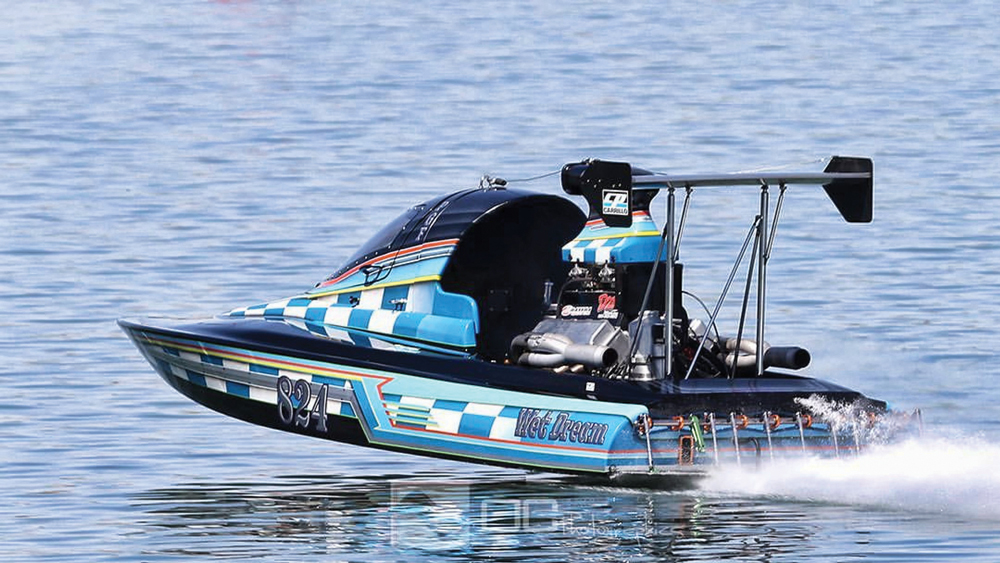
Powering the 2,700-pound boat is a 10,000-hp, 500-cubic-inch, Hemi-based V8 that’s similar to what you’d find underneath the bodywork of an NHRA Funny Car or Top Fuel dragster. The powerplant runs a compression ratio of 6.5:1 and consists of an Alan Johnson billet block with a Bryant Racing crankshaft, CP-Carrillo rods and pistons, forged Jesel rocker arms, and Alan Johnson billet aluminum cylinder heads. Additional grunt is provided by a DMPE 14-71 Roots-type supercharger that delivers 60 pounds of boost, and the combination is fed a mixture of nitromethane and methanol by a mechanical fuel injection system with a pump that’s capable of delivering more than 100 gallons of fuel per minute.
“The fuel pump is a crucial part of keeping these engines happy,” Haas emphasized. “It blows the minds of NHRA crew chiefs when I show them a run on this boat, and how hard it tugs down when it leaves the starting line. If a car tugs down to 7,800 rpm or so, that’s a pretty decent run. Sometimes this boat will tug down as low as 5,800 rpm, and that puts a serious load on it. If you don’t have enough fuel in it when it drops that low because the fuel pump isn’t big enough, it’s on fire.”
The delivery of that fuel—which is 88.5% nitromethane and 11.5% methanol—is managed by an Electrimotion Command Module. “The percentage of nitro that you use has a big impact on the tune,” he said. “The higher the percentage, the more compression it makes.” While the engine is very similar to what you’d find in NHRA Top Fuel, Haas said that there are some important distinctions when it comes to tuning. “In an NHRA car you’d use a rev limiter to regulate engine speed, but we don’t have that—we can turn this thing to whatever speed we think it’ll turn.”
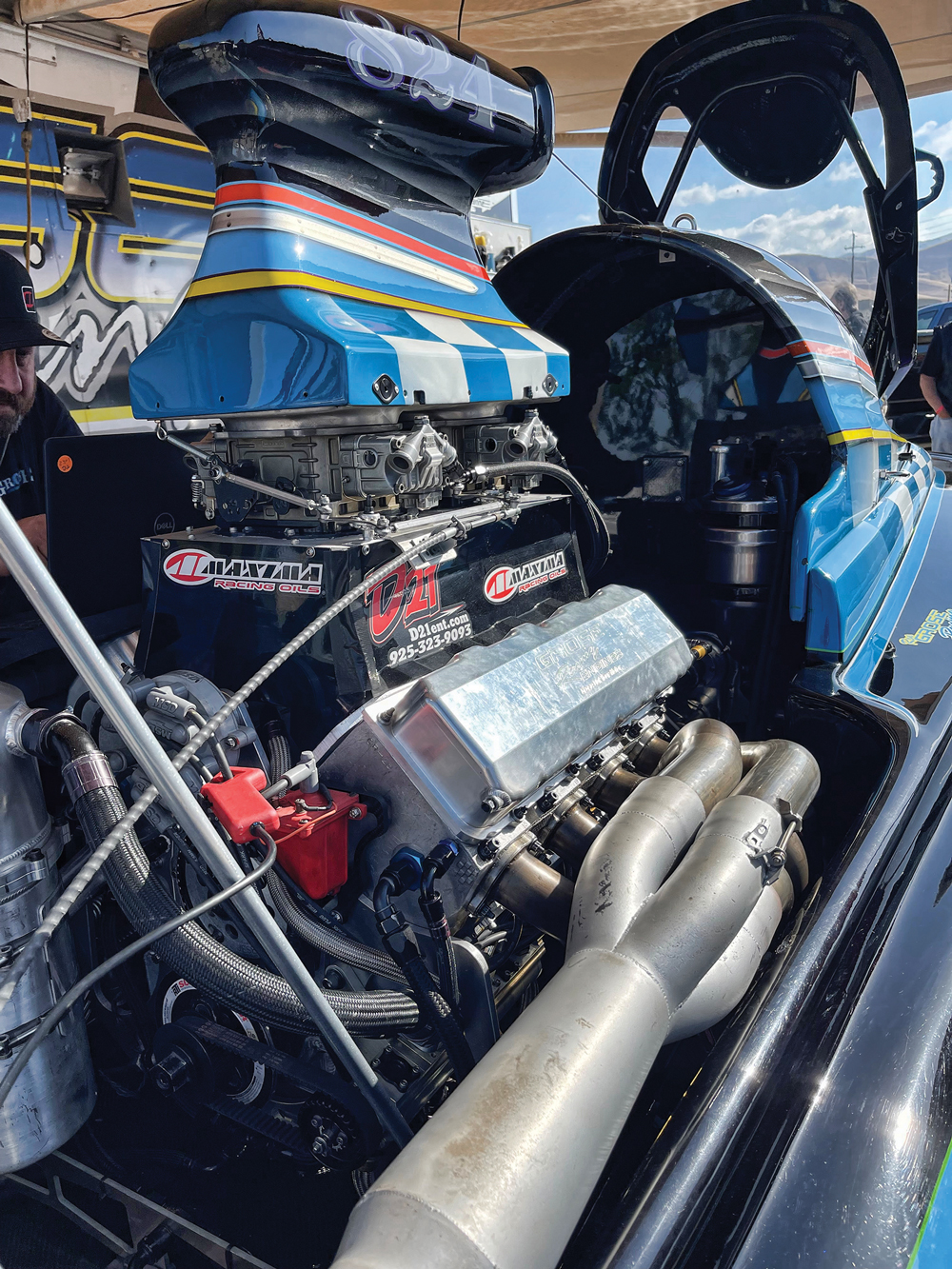
Team driver Kebin Kinsley, who also competes in NHRA Top Fuel, said that the drag boat engine will likely feel familiar to anyone who’s worked on Top Fuel cars. “It’s almost exactly the same—the motor’s just in backwards. And we pull a lot of the technology that we’re using from the drag car side—the Racepak computer and the Electrimotion system are the same. When they make more power with the cars, we make more power with the boats.”
CNC technology has also helped to elevate the game in top-tier drag boat racing, Kinsley said. “Machining propellers has been kind of a dark art for a long time. These were hand-made, and it was almost impossible to get two of them that were exactly the same. A 200-thousandths discrepancy can change the whole attitude of the boat, especially when you’re working with this much power. So being able to get that consistency has been really important.”
He said that the team has already identified what hurt the engine during their run at last year’s Nationals, and they have some other upgrades in store for the coming season. “It’s all about loading the motor when you’re working with nitro, and it just went rich on the big end—we just weren’t loading it hard enough,” Kinsley explained. “There are different ways we can address that, like a big propeller or a larger gear ratio in the W-drives. We’re also working with Revchem to develop a new carbon fiber Kevlar capsule for the boat. The goal is to make it both stronger and lighter than what we’re using now.”
Both Haas and Kinsley say that 280 mph is an achievable goal that they may reach this season, but right now the team is primarily focused on making the boat as consistent as possible.

The sentiment that there’s still a lot left on the table is shared by Grose and Adams as well, not just within their own racing programs, but across the sport. “I think there’s still a lot of performance to be found in boat setup and V-drive stuff, and there’s a lot of engine technology that can benefit these boats, especially when it comes to power adders,” said Grose. “I don’t think that will ever stop. They’re always finding new ways to make more boost.”
While Adams has his sights set on another record-setting run in the 7.0 range in 2023 thanks to some changes made over the winter that have bumped up the horsepower in his naturally aspirated combination, he said that the biggest gains to be had in drag boat racing might be found in the power adder classes.
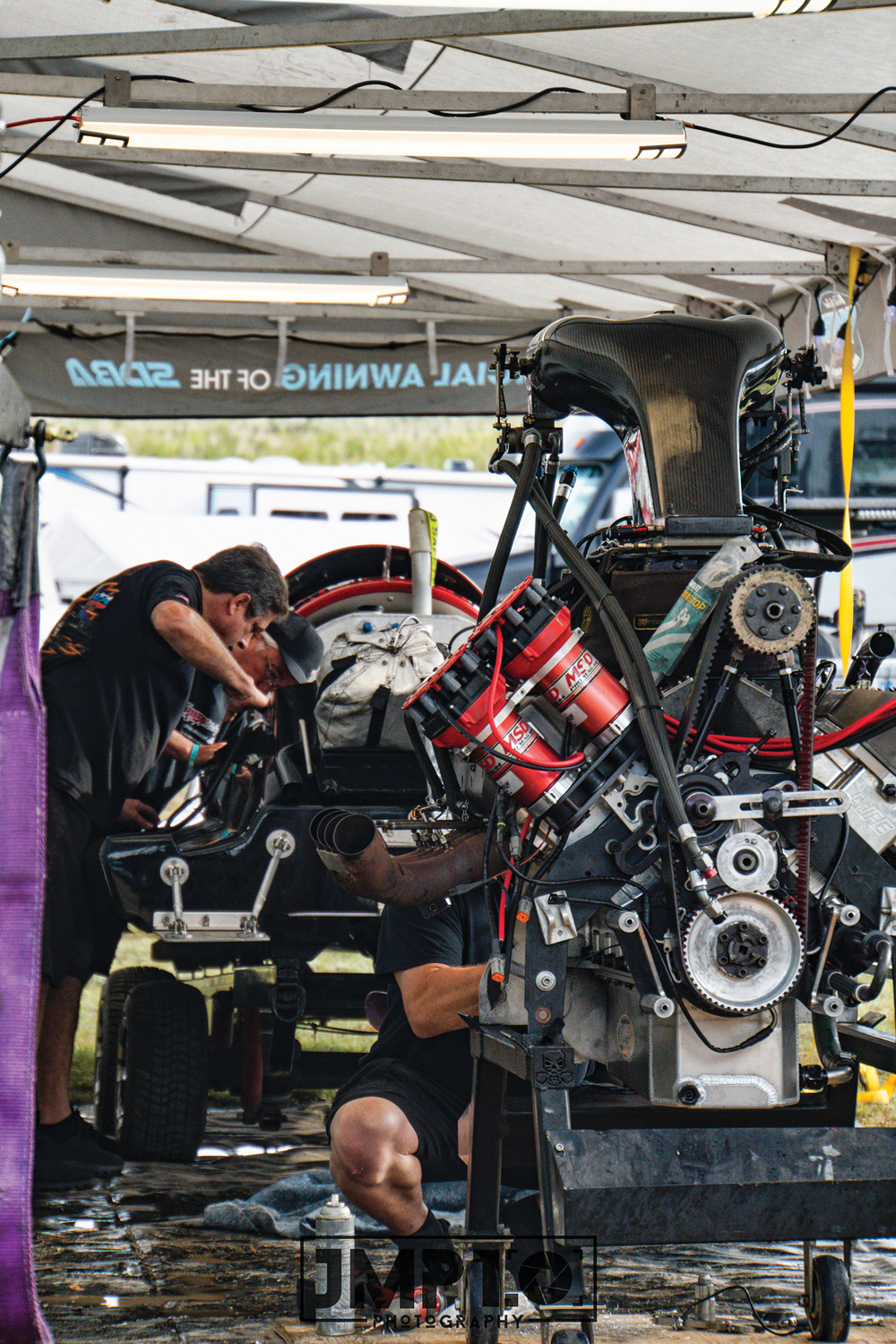
“I think nitrous stuff is really going to come into play for the heavy hitters,” Adams observed. “When I held the record in the Unblown Fuel Jet class, we were closing in on 2,000 hp with a conventional 572-cubic-inch Chevy big block. Now that we’re seeing teams getting into 700- to 800-cubic-inch stuff, it’s just going to raise the bar because they’re not limited by displacement anymore. And as we see more and more teams consistently making 2,500 to 3,000 hp on nitrous, we’re going to see more and more of the existing records get blown away.”
SOURCES
Kjell Adams
Joey Grose, Grose Racing Engines
facebook.com/joeygrose1899/
Todd Haas, Carroll-Haas Racing
facebook.com/carrollhaasracing/
Kebin Kinsley, Kinsley Race Cars & Marine
facebook.com/profile.php?id=100008786174714
 MEMBERSHIP LOGIN
MEMBERSHIP LOGIN JOIN PRI
JOIN PRI
